Designer Nina Tolstrup has set up three eye-catching pavilions on the Strand as part of the London Design Festival, inspired by Barbie Dreamhouses and mid-century modern Palm Springs architecture.
Tolstrup, co-founder of London-based design studio Studiomama, collaborated with the creators of Barbie Mattel and tourism agency Visit Greater Palm Springs to create an installation called Pavilions of Wonder.
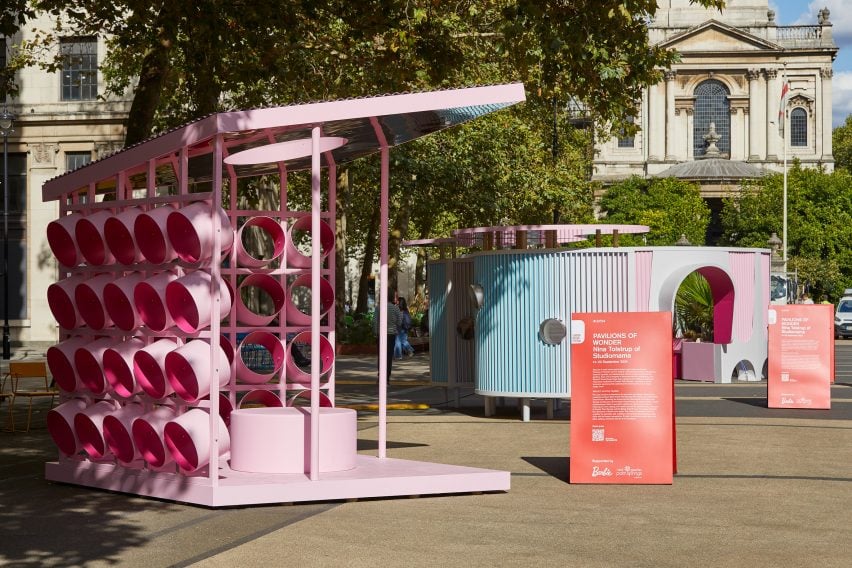
“This year’s London Design Festival (LDF) theme is play, originally we were thinking about a fairground,” Tolstrup told Dezeen about the installation, which is currently on display as part of LDF. “We ended up going to Palm Springs and looking at the beautiful houses there.”
Pavilions of Wonder celebrates the playful design of Barbie Dreamhouses while also referencing the desert modernism of Palm Springs, California’s mid-century modern architecture. This year marks 65 years of Barbie.
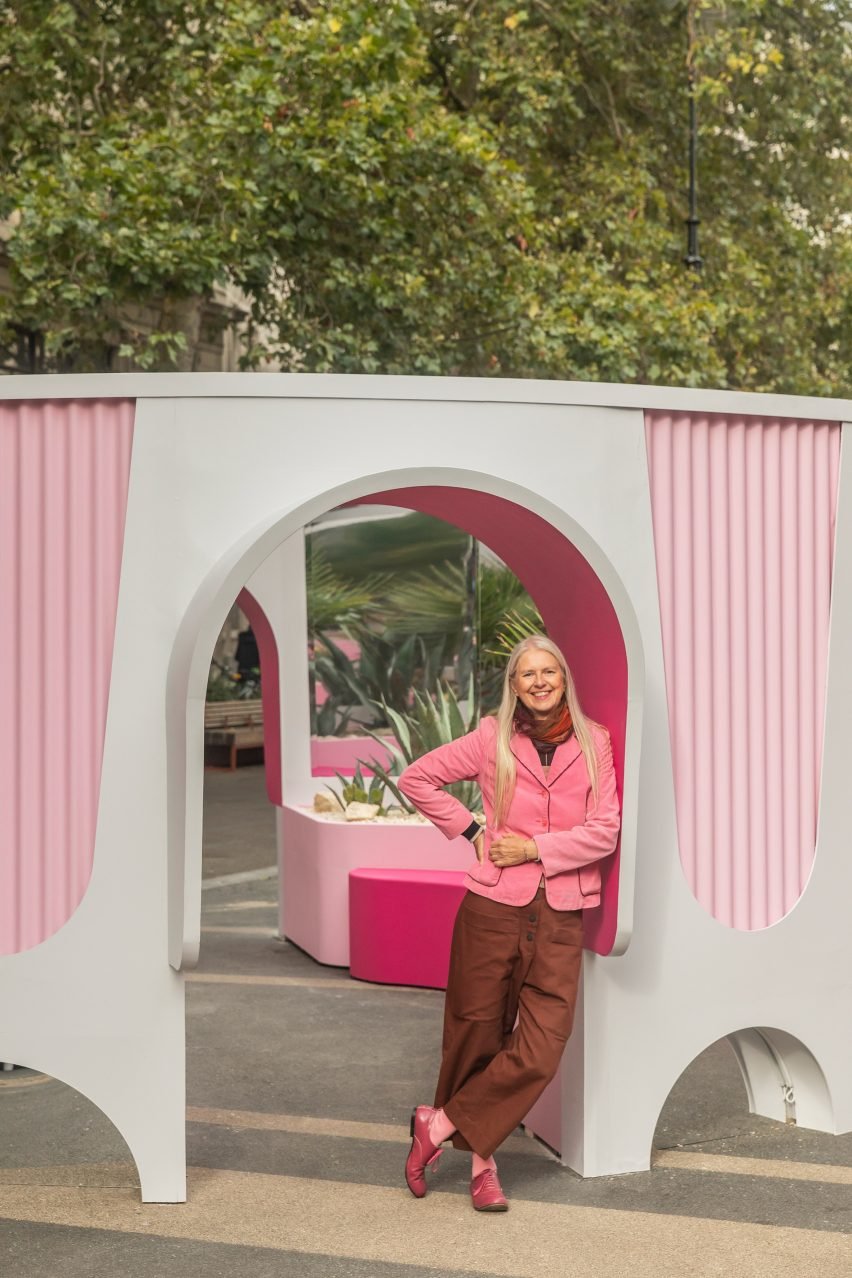
“The two pavilions sit together in harmony on the Strand,” said the designer. “We went in early with our little traffic cones and marked everything so we knew exactly what the pavilions were going to look like, where they sat in the space and how it worked to scale.”
The first pavilion, Dream: Infinity Garden, is the largest of the three, with a diameter of five meters and a height of three and a half meters. According to Tolstrup, “they remained within this footprint, but in different forms.”
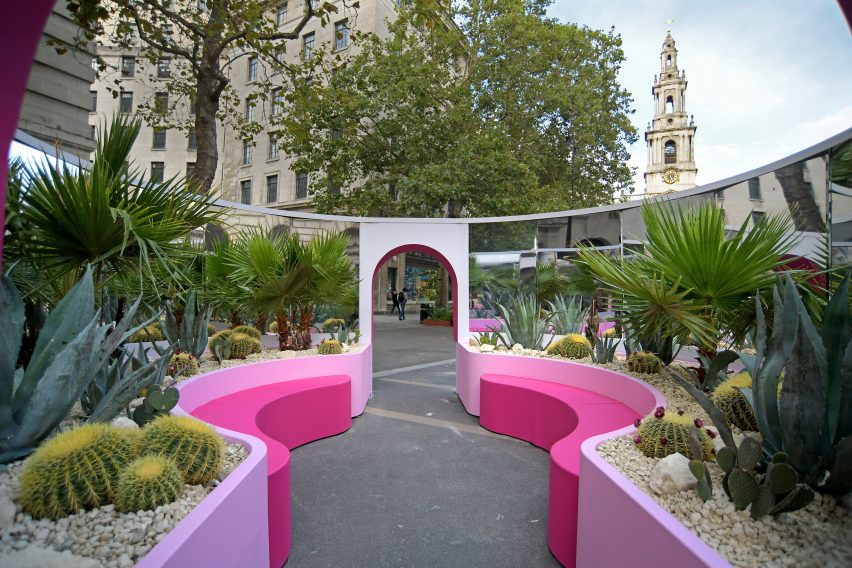
Inspired by the oasis landscape of Palm Springs and the surroundings of the resort town, Tolstrup designed the first pavilion as a circular 360-degree structure mirrored inside with a cacti garden reflected in the mirrors.
Its rounded facade with inverted arches was partly inspired by bank buildings in the Palm Springs area, including the Coachella Valley Savings and Loan, designed by local architect E Stewart Williams.
“The atmosphere is very much that outdoor living condition that seduces you when you’re there,” said the designer. “Everything is highlighted at the top of the mountains – the cactus gardens and the incredible sunrise and sunset. We wanted to bring that to the Strand.”
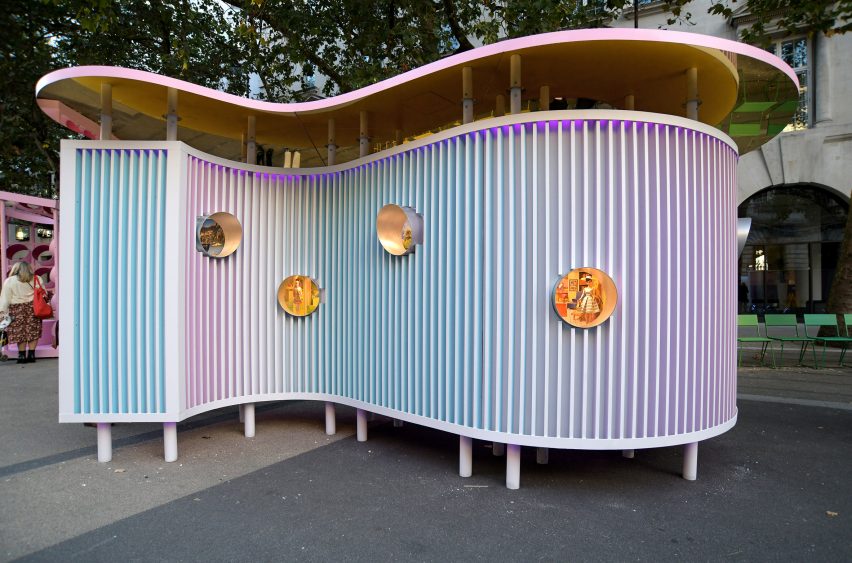
The pavilion was built by construction company Cloud & Horse using corrugated, prefabricated MDF material that can be flat-packed into sections and reused after disassembly without having to be cut. Pink water-based paint was applied to one side of the material.
According to Tolstrup, Swiss architect Albert Frey’s second house in Palm Springs, Frey House II, communicated this more sustainable and cost-effective way of building.
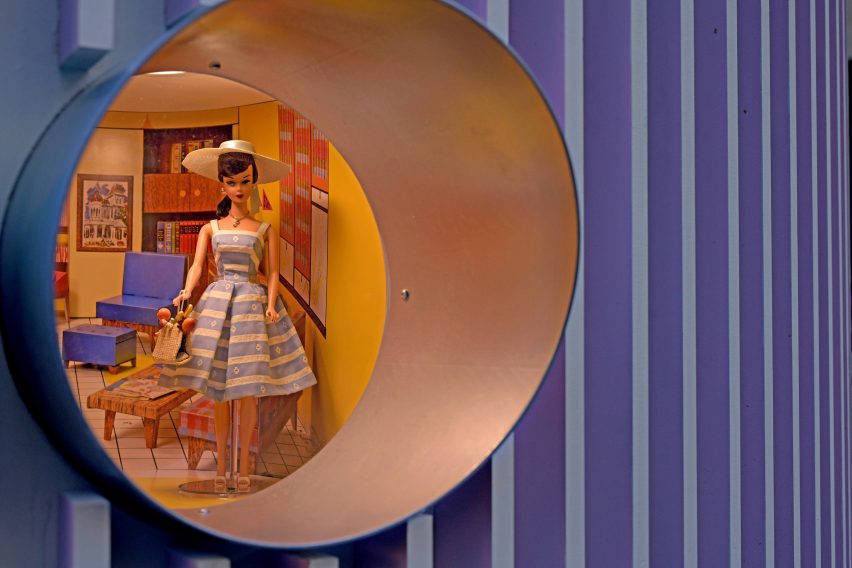
Discover: Design Stories, the second pavilion, was built from CNC-cut plywood, held together on its legs by a metal mesh scaffolding system that can also be dismantled.
A play on form and form, this structure combines elements of geometric signs commonly found in the Palm Springs area with aspects of flat, often square pools. These are commonly associated with both mid-century architecture and 1962 Barbie Dreamhouses designs.
“This pavilion is snake-shaped and has a mirrored roof,” Tolstrup said. “We have peepholes in there, windows into Barbie’s world where you can look and discover.”
Mattel provided the design team with vignettes of Barbie Dreamhouse backgrounds to make the notifications peek. Each of the structure’s openings depicts actual Barbie dolls throughout history.
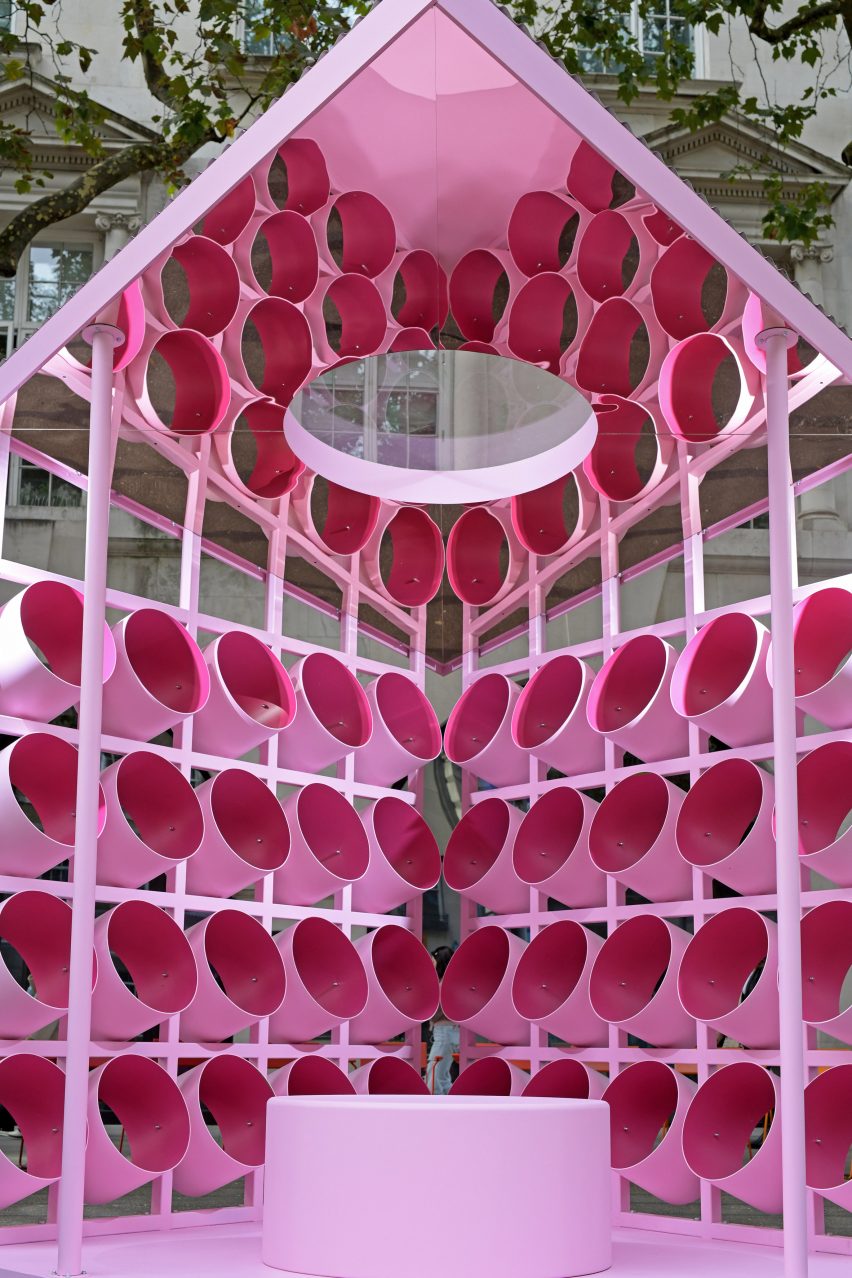
The third pavilion, Reflect: Playful Pauses, was inspired by Palm Springs City Hall and the Tramway gas station, also designed by Frey.
The gas station, known for its distinctive hyperbolic paraboloid canopy, has been featured in previous Barbie Dreamhouses that have featured similar overhanging roofs.
Built as a “very simple metal grid”, the pavilion features a pointed roof complete with ornate kaleidoscopic roundels made of painted drainage pipes.
“The idea of your views being distorted or changing and reflecting as you walk around is an effect used in front of City Hall,” Tolstrup said. “The beauty of mid-century architecture in Palm Springs is this beautiful simplicity.”
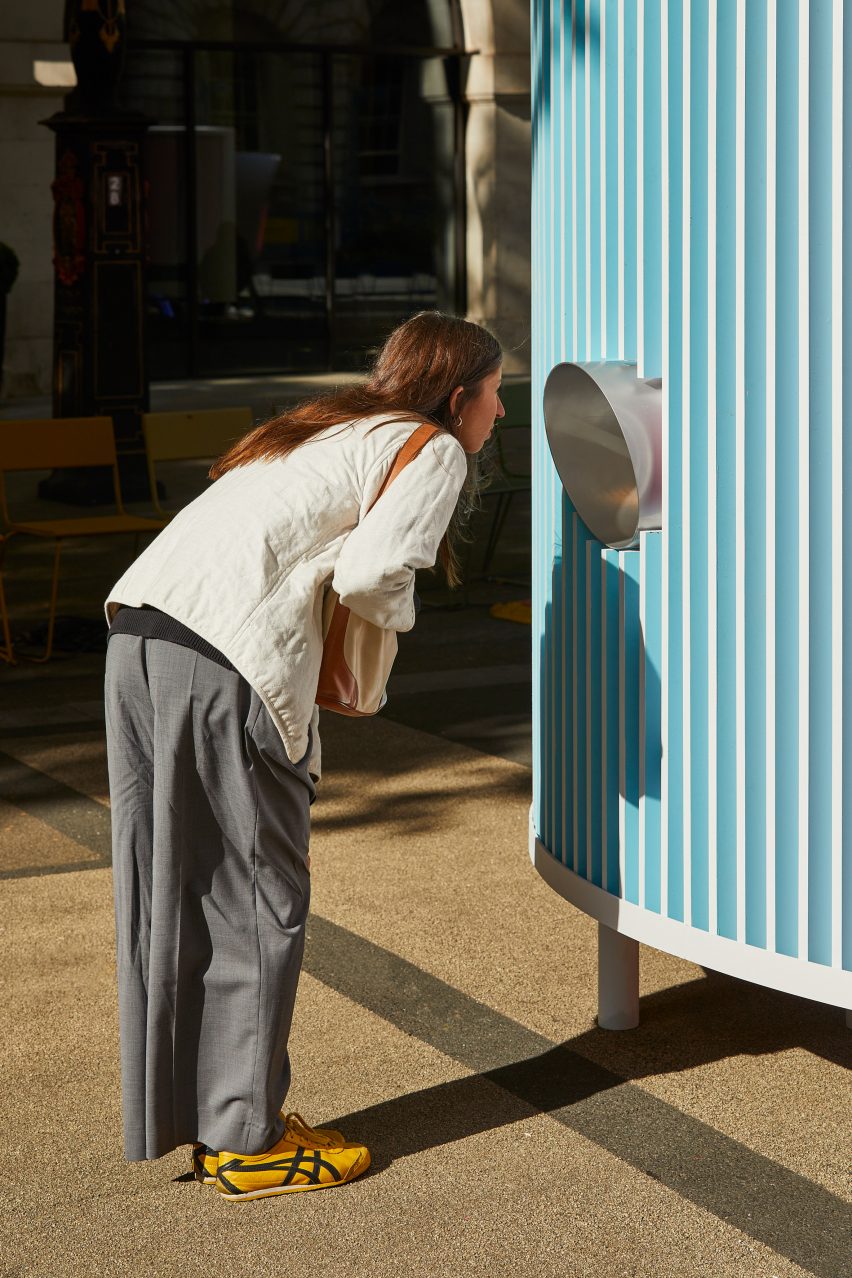
All three structures will be illuminated at night, which will have a colorful effect on arousing the curiosity of pedestrians in the surrounding area.
“This very central London location will generate a lot of traffic in itself,” Tolstrup said. “The installation is not a theme park, but it’s still inspired by this idea of play, you can walk around and have different experiences. It should invite interaction and it should be colorful.”
Other LDF events and installations include a modular furniture showcase and an exhibition and auction of designer and artist eyewear.
Photo taken at the London Design Festival unless otherwise noted.
Pavilions of Wonder is on view from 14 to 22 September as part of the London Design Festival. Check out the Dezeen Events Guide for an up-to-date list of architecture and design events happening around the world.
#Nina #Tolstrup #channels #Barbie #Palm #Springs #LDF #installation